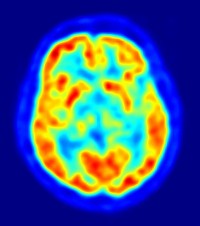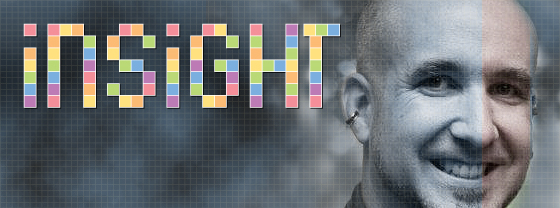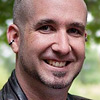
Is anybody still at home when the lights go out?
—Wikimedia Commons/Jens Maus BY-SA
“Death does not concern us, because as long as we exist, death is not here,” said that ancient hero of hedonism and Athenian party animal, Epicurus. “And when it does come, we no longer exist.”
For some, this is of great comfort. The idea of eternity—even if it’s spent watching seasons two to infinite of Firefly—is not everybody’s cup of cocoa. For others, it’s impossible to contemplate our minds ever processing a final thought. A recently published study titled “AWAreness during REsuscitation” has reignited the discussion of what happens to our minds as we die.
The physical nature of mortality has provided fertile grounds for natural philosophers and scientists for thousands of years. Going back to the ancient Greeks, pre-Socratic materialists pondered whether our mind decayed into its atoms on our death, while Plato and friends much liked the idea of our selves existing in a form that persisted long after our meat became dust. Theological influences have since imposed a heavy cultural weight, making it difficult for much of history to even contemplate an end to one’s thought processes long after we’ve breathed our last… let alone critically examine the idea scientifically.
Yet since the 19th century there has been a wealth of studies applying science to the question of what happens to our mind at the brink of death. Now there is one more to add to the list, and it’s a big one.
The term near death experience (NDE) was coined by the psychologist Raymond Moody in 1975 to describe patient accounts of what he believed was “a glimpse of the beyond.” The experiences associated with NDEs have been reported by anywhere between 12 and 18 per cent of survivors of cardiac arrest, depending on who you ask. Identifying causes for these claimed accounts—of seeing tunnels, bright lights, mystical (and emotional) encounters, dissociation and detachment from the body—has been challenged by the usual difficulties one encounters in psychology and neurology, especially with regards to issues of ethics and consent.
One of the first systematic explorations of the phenomena was conducted by psychologists Ian Stevenson and Bruce Greyson in 1980, who reviewed 78 patients through interviews and examining medical records. They made correlations between the experiences and socio-cultural factors in the patient’s backgrounds, suggesting whatever was going on, it heavily reflected the patient’s history. Understanding how the brain is physically behaving during these experiences is also problematic, given invasive research isn’t exactly a priority when a patient is knocking on death’s door. Other studies have speculated on the effects of hypoxia or hypercarbia on various neural networks, flooding of endorphins, or changes to neurotransmitter receptors, however, as potential players.
For those interested in NDE research, assistant professor of medicine at State University, Dr. Sam Parnia, is a big name. In 2001 Parnia reported he had found no biochemical evidence supporting the role of commonly speculated biochemical changes in near death experiences. In a BBC documentary titled The Day I Died, Parnia expressed his views that the mind was possibly a phenomenon that could exist independently of the brain.
In a new study just recently published in Resuscitation, Parnia has released his findings on a four year study involving 2060 people in the UK, Austria and the US who experienced a cardiac arrest and were successfully revived. The statistics of the “AWAreness during REsuscitation” study suggest 40 percent recalled a form of awareness they attributed to the period they were deemed to be clinically dead. Just 9 percent, however, correlated with experiences ascribed as NDEs. Narratives collected describe the details of many of these experiences, ranging from how various machines sounded to the presence and actions of particular medical staff.
In itself, this data is impressive in its scale and detail. It was unfortunate that in spite of placing images around the hospital where cardiac arrest resuscitation was deemed likely, the evidence collected on explicit visual recall was too limited to objectively apply. Yet as far as health culture goes, the study provides a fascinating snapshot of how patients under resuscitation conditions recall their experience.
Parnia’s interpretation of the results is perhaps more interesting, however. In the paper, he again methodically dismisses the likelihood of the usual biochemical explanations. For him, the brain is just too dead to do much of anything while the heart isn’t pumping. The results suggest awareness during cardiac arrest can’t be compared to that during anaesthesia, for instance.
Thus, within a model that assumes a causative relationship between cortical activity and consciousness the occurrence of mental processes and the ability to accurately describe events during CA … when cerebral function is ordinarily absent or at best severely impaired is perplexing.
In a 2013 interview with Wired magazine, Parnia responded to the fact his claims verged on the supernatural by saying “Just because something is inexplicable with our current science doesn’t make it superstitious or wrong. When people discovered electromagnetism, forces that couldn’t then be seen or measured, a lot of scientists made fun of it.”
In reality, most 19th century scientists went to town studying the relationship between electricity and magnetism given the ease with which they could experiment, while the phenomena went on to be used to justify nearly any belief in the supernatural for the next century or so. But while Parnia’s work contributes valuable data to understanding NDE as a cultural phenomenon, his speculations do indeed sit on the brink of pseudoscience. Not because he claims we have no concrete materialistic answer—in that space, lack of confidence is a virtue of having no convincing evidence. But rather, there are hints of daring to give into the temptation that lack of evidence somehow lends weight to immaterial theories.
“It could be that, like electromagnetism, the human psyche and consciousness are a very subtle type of force that interacts with the brain, but are not necessarily produced by the brain,” Parnia says in the same interview. “The jury is still out.”
Only there is no jury in science. And if forced to use that analogy, they never come in to deliver a final official verdict, as much as one day simply stop devoting so much time to the discussion given the usefulness of their understanding. We have a great deal of evidence that lends great amounts of confidence to a causative model of our minds emerging from a material brain. That this model is incomplete or cannot adequately explain certain phenomena given current knowledge doesn’t mean there is a jury sitting around doodling cupcakes on notepads.
Could discoveries such as a spontaneous spike in activity in specific locations in the dying brains of rats add weight to the argument? In what percentage of cases might false memory play a key role? The limitations of examining the brains of dying humans imposes parameters on research which, while unfortunate, do keep that jury doodling. Yet this also means there is little reason to gain confidence in non-neurological causes for our mind.
If Parnia’s inklings have any merit, I for one am looking forward to season two of Firefly. In the meantime, I’m drinking to Epicurus, may I never get to shake his ethereal hand.













If consciousness is not dependent upon and can exist and operate (seeing and hearing what is happening in the operating theatre for example) in the absence of a functioning brain then it should follow that sight and hearing are not dependent upon the possession of functioning eyes and ears?
Do ears function during cardiac arrest? I’m guessing the eardrum will still vibrate.
But the notion that people look down from the ceiling during cardiac arrest implies that their sense of sight is disembodied too.
The ear drum may vibrate after (near) death but if the brain is inactive there will be no firing neurons to transmit and store this information as required by the prevailing neuroscience view. Again this proves mind is not dependant on firing neurons.
Yes.
No one has mentioned that while *waking up* the brain can concoct all sorts of things in its oxygen-starved state which might be then attributed to the time the patient’s brain was nonfunctional. It may be that just before the patient goes brain-dead (or at least, brain-silent; that is, no signals we can detect), they have experiences which they then remember, and also the moments upon waking can contribute to those memories.
Additionally, the article does not mention the observations of pilots put through extreme G forces; they often exhibit very similar reactions to those having NDE’s, such as a “tunnel” of white light and the out-of-body feeling. That can also be simulated with magnetic “helmets” in the lab.
In other words, we don’t need to explain NDE’s necessarily; they appear, from the scientific evidence we’ve collected elsewhere, to be a natural byproduct of the brain in distress.
That’s not right. We do need to explain NDE’s or ADE’s (actual death experiences) in cardiac arrest because there shouldn’t be anything going on in the brain after 10-20 seconds.
When the heart stops, consciousness is lost within a second or two. The brain stem stops functioning and 20 seconds later all global electrical activity ceases. There cannot be any experience supported by what is known about the brain and this is what is so perplexing.
The case of Mr A in Parnia’s book and in the study demonstrated that he had retained lucid cognition with the ability to form memories when his heart wasn’t pumping. The machine cannot make a mistake in measuring the heart rhythm (in this case VF) the man was dead to the staff but claimed to be conscious and heard and saw things he should not have been able to.
It’s just a fact, it doesn’t prove survival but it should give those who want to cling to brain = mind at least something to think about.
“We have a great deal of evidence that lends great amounts of confidence to a causative model of our minds emerging from a material brain.”
The above statement is absolutely false. There is 0 evidence that the mind magically arises out of no where when neurons simply pass chemicals to one another. This study shows that. No brain activity means no firing no electrochemical communication. This study’s observations of consciousness with no firing is not predicted by the prevailing pseudo-scientific neuroscience view and is impossible to explain. It’s proven false. Deal with it.
It still seems cogent to discuss whether patients who had NDE experiences were dying or dead. The assumption that when the heart is not pumping the brain is “too dead” for the mind to “work” is a presumption. Exactly when the experiences occur, since they are subjective is a huge question.
You could examine the brain activity of someone who is indeed dying and who is not simply having an emergency medical event. However, they will die and not be able to relate to you their subjective experience during the process.
The people who we know have them don’t die and the people who do die, we don’t know have them.
During revival after cardiac arrest, there will be a time, possibly seconds, possibly much more, when the patient is unconcious but has brain activity.How can it be claimed that the memories of NDE are not formed during this time?
I have done my own NDE research, having had one in 1974. You can dismiss as much evidence as you like, as many skeptics do, but there is some evidence you can’t. A lady in Seattle was able to describe in detail the operation she was undergoing as a result of a car accident. She arrived at the hospital unconscious and remained that way until she was in the ICU. The surgeons were astounded, why? this lady had been light blind from birth and never “seen” anything in her life. She is just one a many such incidents. I do wish that skeptics would open their minds just a fraction for if you do not look for evidence you most assuredly will not find it.
Which lady in Seattle?
Vicki Noratuk now Vicki Blazon.
The first paragraph was so egregiously wrong and ignorant, I couldn’t get past it. Epicurus advised a moderate way of life. He realized that the excessive pursuit of pleasure only resulted in more suffering in the long wrong. You seem to have him confused with Aristippus, who actually advocated an unrestricted pursuit of pleasure as par of his philosophy of hedonism. Or have you never heard of Aristippus and just like making things up you suppose will past muster with people as ignorant as you are?
Some Skeptic!
Not that it has a whole lot to do with the points made in the article, but the commentator’s pointed condemnation and name calling of Mr. McRae for his reference to Epicurius seems entirely unfair and undeserved. Here is a quote from an article in Wikipedia which appears to be well documented. http://en.wikipedia.org/wiki/Hedonism: “Following Aristippus—about whom very little is known—Epicurus believed that the greatest good was to seek modest, sustainable “pleasure” in the form of a state of tranquility and freedom from fear (ataraxia) and absence of bodily pain (aponia) through knowledge of the workings of the world and the limits of our desires. The combination of these two states is supposed to constitute happiness in its highest form. Although Epicureanism is a form of hedonism, insofar as it declares pleasure as the sole intrinsic good, its conception of absence of pain as the greatest pleasure and its advocacy of a simple life make it different from “hedonism” as it is commonly understood.”
Thanks for supplying those, Michael. Indeed, Parnia does reference his claim on there being no brain activity during CA. He also addresses differences in brain activity during anaesthesia and being comatose.
Personally, I have no problem with this sort of speculation. That there is no evidence of significant neurological activity is itself fascinating. Since the demands of preserving life usually take priority over probing a dying brain, I wouldn’t be surprised if there’s a whole lot of hidden neurological factors that come to the fore when the brain is stressed or traumatised, however we have to be comfortable without a model at this stage.
Parnia’s logic isn’t all that different to people who see a UFO and conclude since it can’t be a cloud, marsh gas or Venus, the observation adds weight to the conclusion of it being caused by intelligence from another planet.
“Still this study is anecdotal at best. Did he show brain dead”
The paper includes four citations to previous studies indicating no brain activity.
“…While some investigators have hypothesized there may be a brief surge of electricity after cardiac standstill, (16) in contrast to anesthesia typically there is no measurable brain function within seconds after cardiac standstill.(17-21)”
“16. Borjigin J, Lee U, Liu T et. al. Surge of neurophysiological coherence and connectivity in the dying brain. Proc Natl Acad Sci U S A 2013;110:14432-7.
“17. Bennett DR, Nord NM, Roberts TS, Mavor H. Prolonged “survival” with flat EEG following CA. Electroencephalogr Clin Neurophysiol 1971:30-94.
“18. Cerchiari EL, Sclabassi RJ, Safar P, Hoel TM. Effects of combined superoxide dismutase and deferoxamine on recovery of brainstem auditory evoked potentials and EEG after asphyxial CA in dogs. Resuscitation 1990; 19:25-40.
“19. Crow HJ, Winter A. Serial electrophysiological studies (EEG, EMG, ERG, evoked responses) in a case of 3 months’ survival with flat EEG following CA. Electroencephalogr Clin Neurophysiol 1969; 27:332-3.
“20. Hughes JR, Uppal H. The EEG changes during CA: a case report. Clin Electroencephalogr 1988; 29:16-8.
“21. Kano T, Hashiguchi A, Sadanaga M. Cardiopulmonary-cerebral resuscitation by using cardiopulmonary bypass through the feral vein and artery in dogs. Resuscitation 1993; 25:265-81.”
If there is good beer and pizza to go with the Firefly episodes ad infinitum, sign me up.
According to this fellow’s reasoning, those of us who have had general anesthesia should have been walking around the OR during our procedures, ready to sue for any breach of sensibility when we wake up. That does not seem to be the case.
My experience of falling asleep has elements in common with NDEs, specifically the light and tunnel experience. Is that common?
Well, I think his data must be looked over carefully.
Cardiac arrest does not mean the brain stops working; it does not mean the receptors and neurotransmitters are not being either produced or acting on.
Still this study is anecdotal at best. Did he show brain dead? How this compared with people brain dead or vegetative state? Did he compare brain activity in such individuals vs his group of study?
Correlation and causation are not necessarily the best in this study…